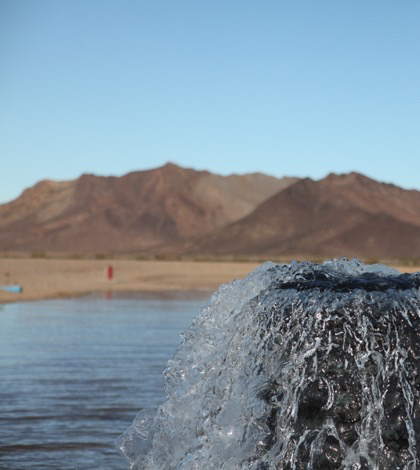The Cadiz Water Project has entered into a joint venture agreement with renewable energy company Lucid Energy to install electric generation technology in the first phase of their project.
The first phase of the Cadiz Water Project includes the construction of a 43 mile pipeline to connect an underground aquifer in the east Mojave Desert containing up to 34 million acre feet of water to the Colorado River Aqueduct which transfers water to areas throughout Southern California.
The joint venture between the Cadiz Water Project and Lucid Energy would install in-line turbines in the water pipeline that would generate clean energy for the Arizona and California Railroad which owns the right of way for the project and operates the rail line.
LucidPipe is a patented, in-pipe turbine generator that efficiently captures the energy of moving water inside large pipelines and converts it to a continuous source of low-cost electricity. Water passes through spherical, lift-based turbines and causes them to spin, generating electricity from the water flow and pressure head inside the pipe. Because the system operates inside of pipelines, it creates no environmental impacts.
“There are thousands of miles of gravity fed water pipelines across our country that could make use of our unique hydropower technology without harm to the environment,” said Gregg Semler, president and CEO of Lucid Energy. “LucidPipe generates baseload energy with no carbon emissions and no disruption to pipeline operations, providing clean, eco-friendly power in the truest sense of the word. We are excited to be able to collaborate with Cadiz in this green power venture.”
The power generated by the Lucid Energy system has been dedicated to the Arizona & California Railroad as part of its lease agreement with Cadiz Inc. The Cadiz Water Project pipeline will be built underground in the active Arizona & California Railroad right of way. The use of railroad right of way for pipelines and utilities is a common practice that includes pipelines for natural gas, water and petroleum, as well as telecommunications and electrical conduit. Use of the existing right of way also avoids creating new corridors across pristine lands in environmentally sensitive areas such as the Mojave.
The LucidPipe development further exemplifies the environmental sensitivity of the Cadiz Water Project’s design and implementation. The developer recently set aside 7,000 acres of its property for preservation of habitat for the threatened desert tortoise.
The Cadiz Water Project will provide up to 50,000 acre feet of water to agencies throughout Southern California. This is enough water to meet the needs of over 100,000 homes annually. A second phase to the project includes an opportunity for the storage of Colorado River water during years of high precipitation for use during inevitable droughts.
The Cadiz Water Project completed its environmental reviews in 2012 through the California Environmental Quality Act (CEQA), a stringent environmental review process that included comment and scrutiny from local governments, Federal Agencies including the National Parks Service as well as numerous environmental organizations. The final Environmental Impact Report (EIR) was approved in July of that year. Legal challenges to the EIR were rejected in 2014 and all approvals upheld.
As ground water is an important resource in the area, a secondary environmental management plan enforced by San Bernardino County over the project’s 50 year operation was voluntarily imposed on the Project. The memorandum of understanding between the County, Cadiz and the Project lead agency Santa Margarita Water District creates a Groundwater Management, Monitoring and Mitigation Plan to be performed and monitored by the County. The GMMMP will insure the protection of desert resources including vegetation, mountain springs, and water and air quality.
The Project is slated to begin construction next year.
 California Water News Daily Your Source For Water News in California
California Water News Daily Your Source For Water News in California


